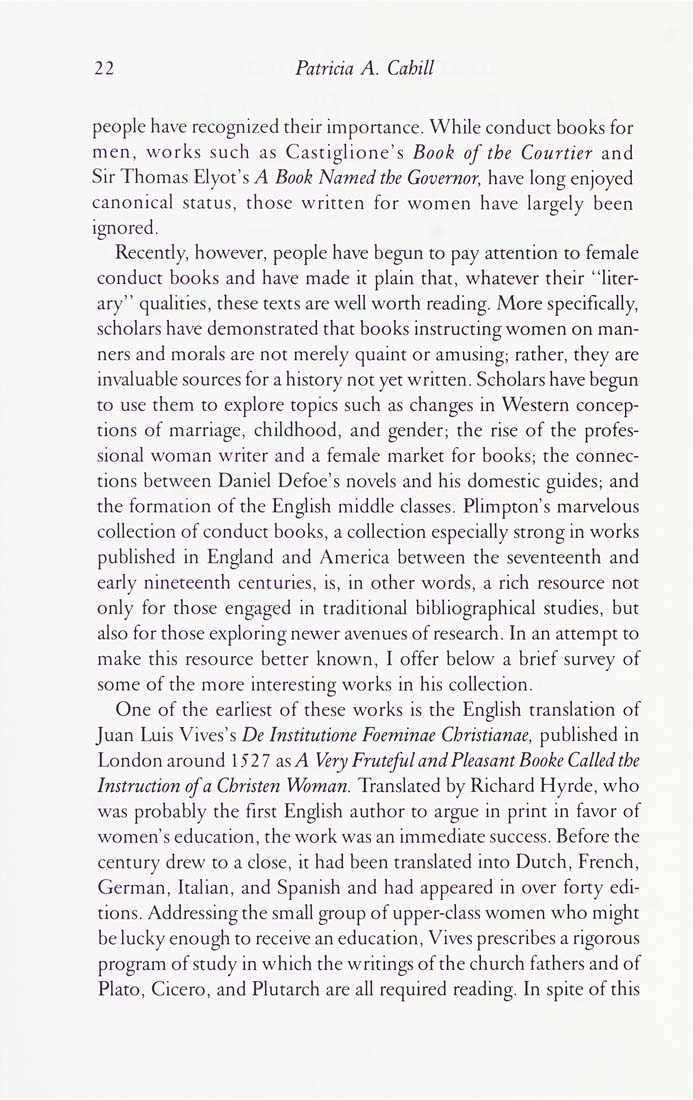Columbia Library columns (v.42(1992Nov-1993May))
(New York : Friends of the Columbia Libraries. )
|
||
|
|
|
|
| v.42,no.1(1992:Nov): Page 22 |

22 Patricia A. Cahill people have recognized their importance. While conduct books for men, works such as Castiglione's Book of the Courtier and Sir Thomas Elyot's A Book Named the Governor, have long enjoyed canonical status, those written for women have largely been ignored. Recently, however, people have begun to pay attention to female conduct books and have made it plain that, whatever their "liter¬ ary" qualities, these texts are well worth reading. More specifically, scholars have demonstrated that books instructing women on man¬ ners and morals are not merely quaint or amusing; rather, they are invaluable sources for a history not yet written. Scholars have begun to use them to explore topics such as changes in Western concep¬ tions of marriage, childhood, and gender; the rise of the profes¬ sional woman writer and a female market for books; the connec¬ tions between Daniel Defoe's novels and his domestic guides; and the formation of the English middle classes. PUmpton's marvelous collection of conduct books, a collection especially strong in works published in England and America between the seventeenth and early nineteenth centuries, is, in other words, a rich resource not only for those engaged in traditional bibliographical studies, but also for those exploring newer avenues of research. In an attempt to make this resource better known, I offer below a brief survey of some of the more interesting works in his collection. One of the earliest of these works is the English translation of Juan Luis Vives's De Institutione Foeminae Christianae, published in London around 1527 as A Very Fruteful and Pleasant Booke Called the Instruction of a Christen Woman. Translated by Richard Hyrde, who was probably the first English author to argue in print in favor of women's education, the work was an immediate success. Before the century drew to a close, it had been translated into Dutch, French, German, Italian, and Spanish and had appeared in over forty edi¬ tions. Addressing the small group of upper-class women who might be lucky enough to receive an education, Vives prescribes a rigorous program of study in which the writings of the church fathers and of Plato, Cicero, and Plutarch are all required reading. In spite of this |
| v.42,no.1(1992:Nov): Page 22 |







